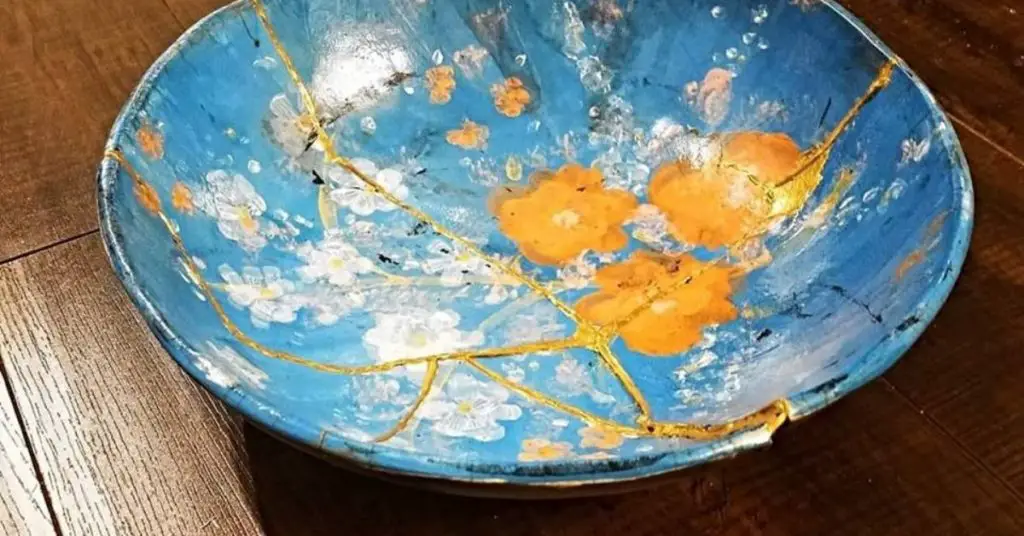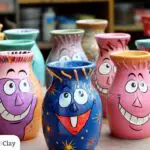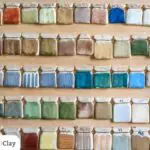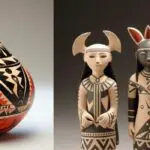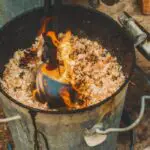Japanese pottery is a beautiful part of the culture and history of Japan. Japanese innovations in ceramics have shaped pottery across the globe. The kintsugi technique is a key feature in Japanese ceramics.
The traditional Japanese art of kintsugi served the wealthy class. Since then it has taken on a philosophical life of its own. It’s become the focus of books and serves as a zen symbol.
So let’s get into it: What is Kintsugi and how can you experience the rich history?
What Is Kintsugi?
Kintsugi is an art form of rejoining a broken pottery piece with a lacquer mixed with powdered gold or other metals as the adhesive.
You may have heard of Kintsugi referred to as Japanese pottery gold or Japanese broken pottery. That’ because kintsugi means “golden joinery”. And is sometimes referred to as kintsukuroi meaning “golden repair”.
Kintsugi’s History
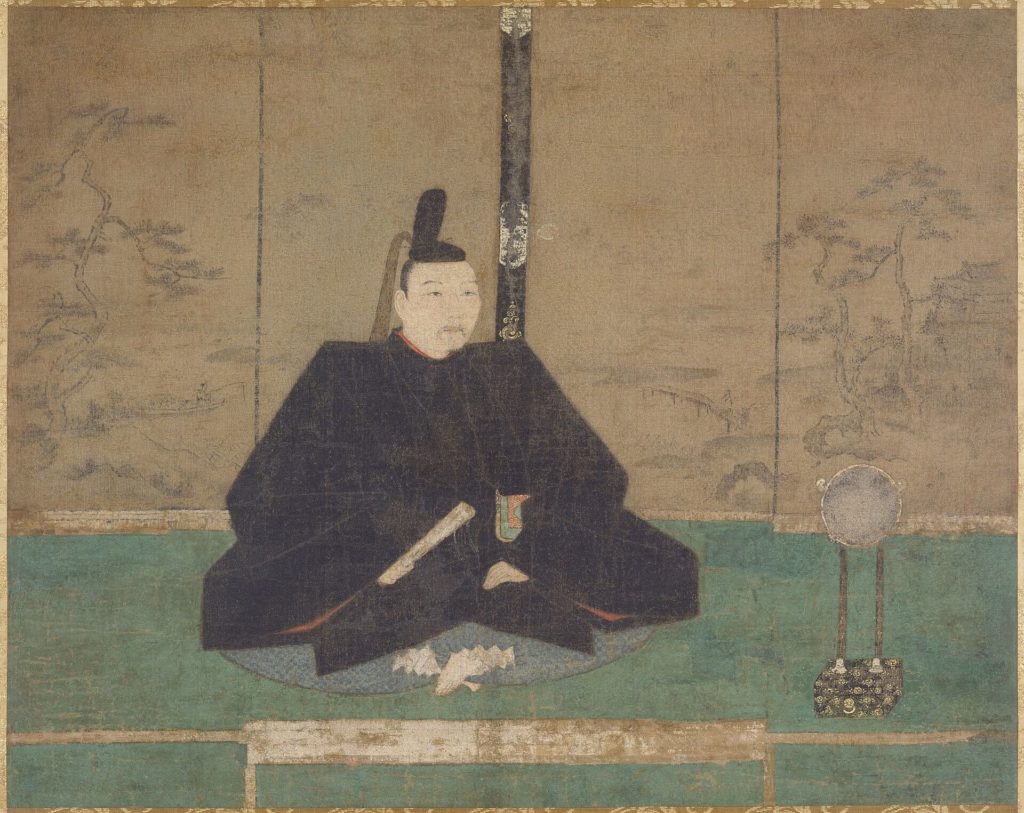
The traditional story of how Kintsugi is from the late 15th century. Ashikaga Yoshimasa, a Japanese Shogun, sent a tea cup away to be repaired. The returned piece displeased him.
The Japanese craftsmen of his day set out to mend the bowl with a pleasing appearance resulting in what we now know as Kintsugi.
This set in motion a Japanese practice. Within a few centuries, Kintsugi was a common means of fixing broken ceramic pieces. Legend has it that some Japanese potters would buy, break, and repair tea bowls to achieve the aesthetic.
Kintsugi’s philosophical influence
The initial intent of kintsugi was to fix ceramics. But it has melded over time with traditional Zen elements. Kintsugi today is a celebration of the flaws that come with time.
Many of us start seasons of our life hoping for perfection.
We’ll have a perfectly fulfilling relationship, a perfectly meaningful job, or a perfectly sound financial state.
But life comes with trials and nothing turns out perfectly.
Kintsugi is countercultural. While society celebrates the new, beautiful, and young, Kintsugi calls us to remember. And it honors what is damaged and scarred.
Therapy and Kintsugi
Beyond the Zen philosophy, therapists have used Kintsugi to help their clients reflect on life’s pains.
This video from “The Good” with Alexa Altman is wonderful and celebrates the beauty of imperfections. In it, Alexa breaks a bowl, repairs it, and talks through the therapeutic qualities of Kintsugi. Check it out:
Alexa walks through the objects in the process and addresses them as teachers.
- Cloth: Something that is comforting to us
- Hammer: Things that bring our attention to our flaws
- Broken object: Don’t rush to fix them. Sit with the pieces and survey where they are. Be mindful.
- Glue: Connection. Healing comes from connection and not perfection.
- Filing: You begin to learn from what you’ve experienced. This is a chance to reflect on the cracks in your own life.
- Liquid gold: It highlight’s the journey. You are who you are because of this journey – don’t hide it. The repair gives new life to the old.
Methods of Kintsugi
Crack
This is typically how you’ll use Kintsugi to repair pottery. The method gives the impression of veins coursing through your fixed pot.
The crack method is what I go over in my article on how to do Kintsugi on broken pottery.
Piece
This technique is required when large parts of your pot are missing. Instead of ceramic material, the whole is replaced with epoxy exposing more surface area to the gold finish.
Joint-call
This method of repair replaces the broken ceramic parts with lacquered compound joining fragments together. The joint-call method uses pieces from other pottery.
In this method, you join a ceramic substitute with lacquered and gold powder.
How to fix broken pottery with Kintsugi
Lacquerware has been a common artistic finish in Japanese history. It is fitting it has become the primary means of repairing Japanese pottery. Plus, the process of Kintsugi often results in a more durable piece.
Do you have broken pieces around your house that you’re raving to fix? You can purchase a kintsugi repair kit and check out our article How to Kintsugi: Fix broken pottery the Japanese way.
Celebrated Kintsugi pottery
Dish with Bamboo Leaves. The repaired piece is from the 18th century and in the style of Ogata Kenzan 尾形乾山.
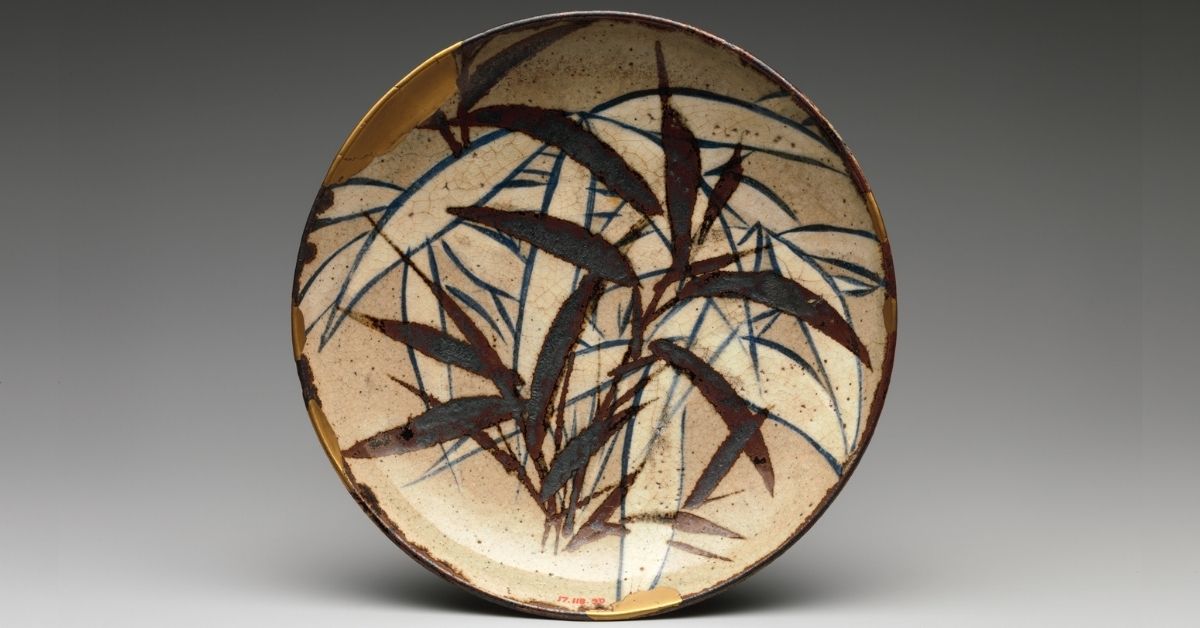
The piece can be seen at the MET Museum.
Tea Jar with Peony Arabesque and Plum in Cochin Style. It’s from the second half of the 19th century by Eiraku Tokuzen. It can be seen at the MET Museum.
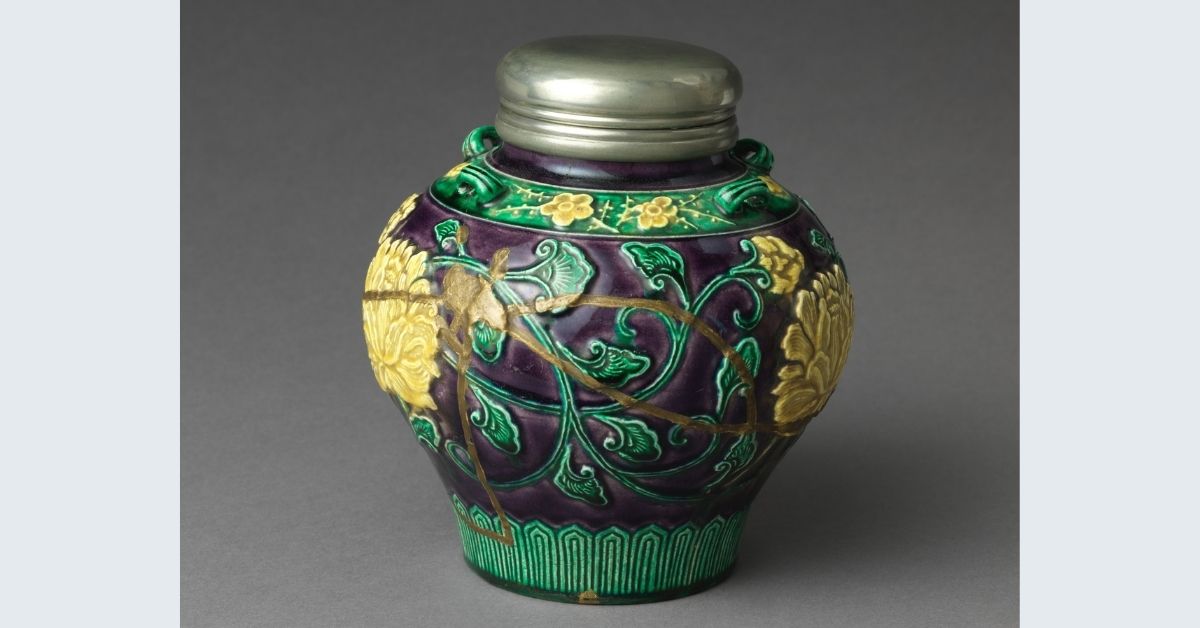
Unknown work and unknown artist. This piece can be seen at the Maidstone Museum.
At Maidstone Museum, there are many items on display in the Japanese collection that have been mended with the Kintsugi techniques. These include bowls, tea sets, and ornaments. Each object wears its scars with pride and tells its history through the twisting, flowing, vivid lines of Kintsugi which decorate the objects. Next time you are at the museum, take the time to look closely at these items, and perhaps when you break a fragile object in the future (maybe a vase or your favourite mug), you may recognise it as less of a tragedy and more of a transition.
Excerpt from The Maidstone Museum Blog
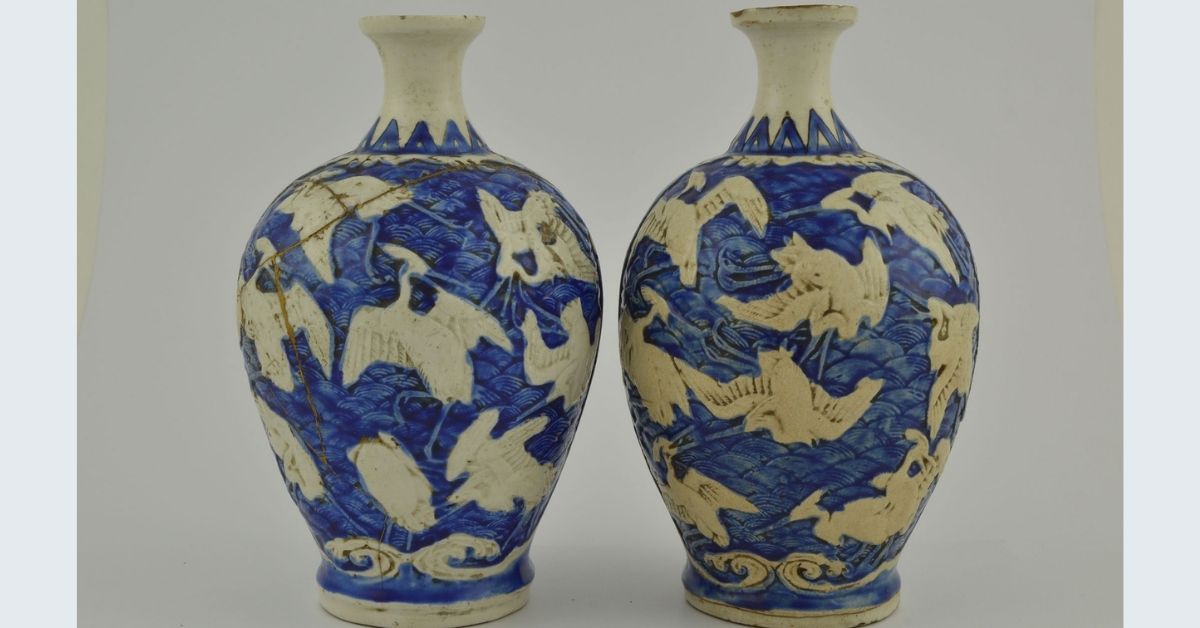
Conclusion
The ancient Japanese pottery gold is a beautiful tradition dating back to the fifteenth century. Kintsugi repairs creates these beautiful golden seams by using precious metal to mend a broken piece.
How will you practice Kintsugi? I hope it can be a way to reflect and reframe your own “flaws”.
And if you need to fix broken pottery and want to try your hand at Kintsugi, visit our blog: How to Kintsugi: Fix broken pottery the Japanese way.
Related Articles
Did you like what you read? Great! We have more articles on the blog. Check out a few of our most related articles to the one you just finished:

